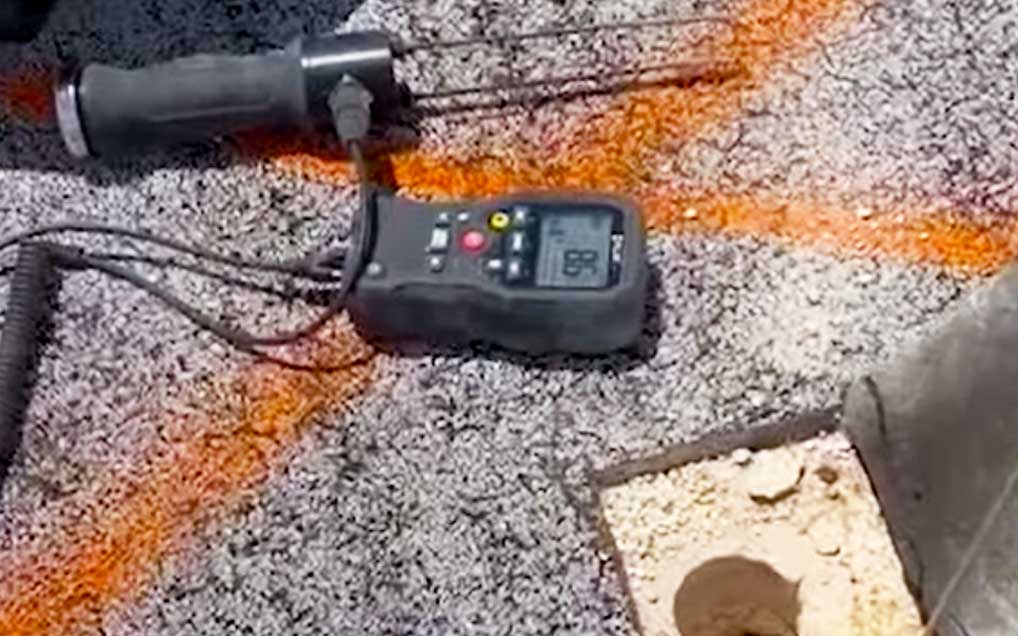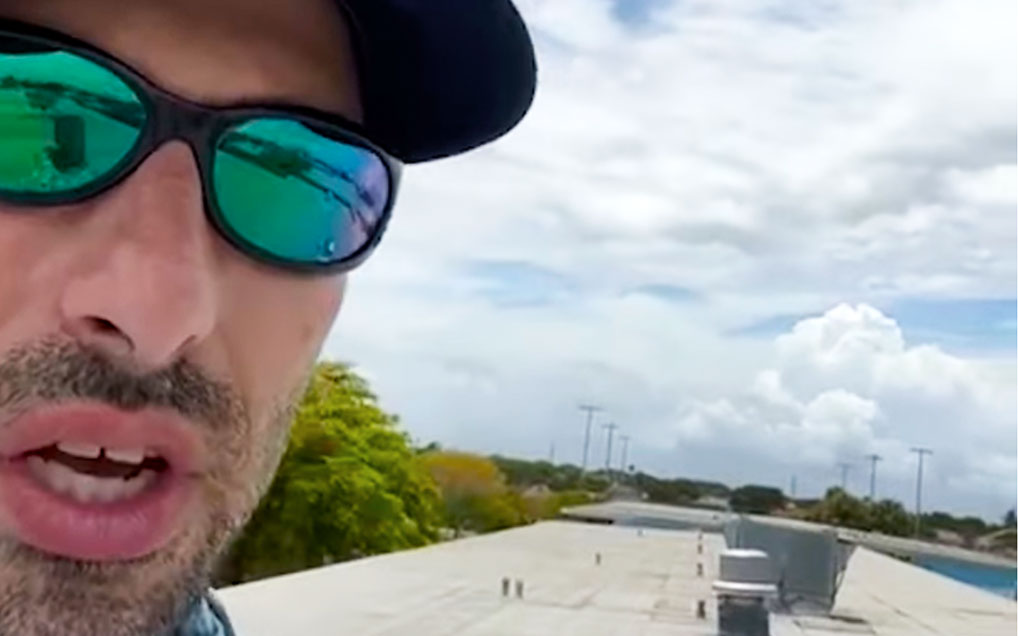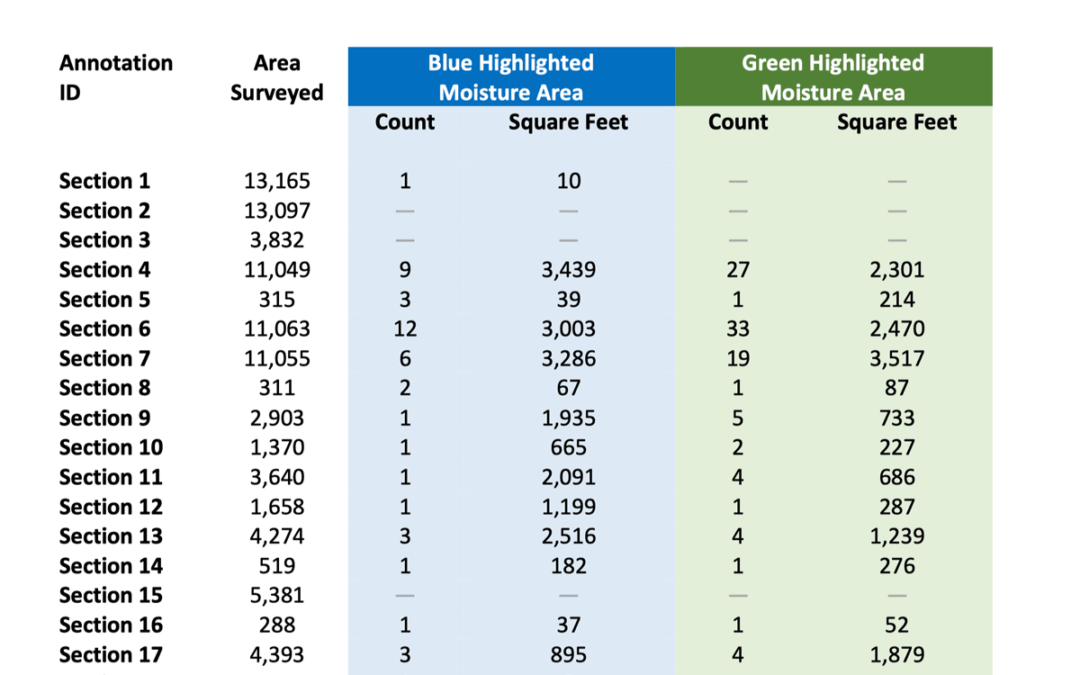Video Transcript
What’s up, everyone? My name is Jeff Carrillo with Structura View. And today I’m going to talk to you guys about some tips to keep your commercial roof budget healthy.
Roofs are expensive. Every commercial property owner who’s looking to purchase or acquire a new asset for a long-term investment needs to consider what it takes to maximize the life of the roof system.
Today, if you purchase a brand-new TPO roof system, it’s sold and warranted to last few 20 years or more. But statistically,
if that roof goes unmaintained or poorly maintained, it will only last you 12 years.
If you simplify that into numbers, let’s take a 100,000 square foot roof system that costs $7 a square foot, giving you a total cost of $700,000 for the install.
For example, this could be a small warehouse, or condo, office building, or even a small shopping center. So if you take that new building that you just purchased or that new roof that you just purchased and don’t implement an effective maintenance strategy, you’re likely leaving 40% of that roof’s life and money on the table, equating to, in this case, $280,000. And that for any property owner is a huge hit to the bottom line. While this specific example is for TPO, this same concept or principle applies to almost any roof system.
Now let’s go over a few helpful tips to ensure that you have or build an effective maintenance program for your roof system. Not all maintenance programs are created equal. Some are very expensive, while others are very affordable. But in reality, the only thing that matters is that you’re receiving an unbiased assessment and an actionable plan that helps you extend the serviceable life of that roof system.
All right.
Maintenance item number one is roof cleanliness, often the most overlooked but the simplest maintenance item that anyone can do, whether you’re a roofer or not, is simply keeping debris and other objects or problematic items off of your roof system.
For example, natural occurrences like leaves and sticks from nearby trees. They often find their way to the drains clogging them, causing water to back up, leaving ponding water sitting on your roof. For days or weeks. I’ve seen almost entire roof systems just holding water days after a rainstorm because the drains were not doing their job at all.
And as we all know, water by nature with gravity finds a way through the path of least resistance. Water degrades the roof system, and your roof system is not designed to hold water for more than a few days. With construction materials and other tools on the roof system, a natural or a wind event could cause punctures or holes in your roof just because of those objects being tossed or moved around on your roof system.
If you have a single-ply roof system such as TPO or EPDM, that’s not ballasted, for example, the cleanliness of that membrane will have a heavy impact on your building’s energy efficiency. If you have a lot of dirt buildup or mold or mildew, something that absorbs a lot of heat, then it’s going to naturally cause your building to be less efficient from an energy perspective.
Item number two on our inspection list is to regularly inspect roof conditions around mechanical equipment. HVAC techs and plumbers are regularly accessing the roof. It’s not uncommon to find incidental damage or punctures from the work that they’re performing on the roof system. Sometimes these holes or punctures or damage is immediately felt and experienced by leaks in the building, and other times it’s slow to be able to actually reach the inside of the building and can be caught before they become problematic.
The next item on our list is studying membrane conditions. One of the easiest things to study and visually observe on the roof is ponding water. If you have ponding water and it’s not due to a clogged or backed-up drain, it can often be caused by either a design or an install issue or because of deterioration of the composition of the roof system.
So, for example, if you have moisture in the roof system that’s causing degradation of the insulation, that will often cause a bowl or a lower portion or a lower area in the roof that will hold water on the surface, surface ponding water can be an indication of conditions within the roof system.
Another thing is, as we’ve already talked about, water sitting on a roof system will eventually find its way into your roof system if it’s not already there.
Additionally, we’re studying seam conditions, whether it’s welds on a TPO roof or seams on a mod bit or other type of roof system, making sure that the integrity of those is solid and that they are truly waterproof and water-tight.
If issues are found, sometimes they can be systemic and they can be problems, beginnings of problems throughout the roof system or other times they can be isolated issues that can be easily patched or remedied.
Another thing that we often look for is blistering. Blistering can be often one of two things. One, an indication of moisture that’s trapped in the roof system and gases are trying to escape or two it’s an issue from the install and blisters have occurred at a later date.
Oftentimes it’s wise to fix these blistering locations because when pressure builds up to be too much, you can often see those blisters rupture, obviously allowing for a big entry point of moisture into your roof system.
The next item on our list is if you have any active leaks or sources of water entering into your building. These are great places to obviously start knowing where the leak is experienced in the building and then understanding the roof’s composition can give a roofing contractor or an industry professional a great place to be able to start with tracking down where the source of your leak is.
Once the source of that leak is identified, we can then determine was it a puncture due to heavy foot traffic or other repair technicians that have been on the roof? Or was it a potential systemic beginning of a systemic failure in the roof system due to poor workmanship, etc.?
Once you can identify what the source of the problem is, you can then determine whether this is a truly isolated issue that can be remedied on the spot, or if you need to start developing an actionable plan to mitigate this from continuing to happen in other locations on the roof system.
Next on our item list is to perform inspections before and after major weather events.
So here in Florida, we obviously get a lot of hurricanes and isolated storms. It’s important to be prepared both before the storm and after the storm.
I mean, by that, as we deal with insurance claims all the time. And one of the biggest fights with insurance companies is determining what is a preexisting condition versus what is an actual storm created opening or damage to your roof system.
If you can prove a good track record of performing routine inspections, identifying any issues and showing that those issues were remediated this carries a lot of weight when filing an insurance claim.
Performing an inspection both before and after a storm also provides you with very effective documentation that reflects exactly what the condition of your roof was like before the date of a loss, and then immediately after.
The next item on our list to talk about is thermal imaging. This is a service that’s becoming more and more popular in roof maintenance programs today.
With the advancements in technology and being able to take thermal imaging and combine it with drone technology, we’re able to cost-effectively study large and multiple roof systems all in one evening.
The data that’s collected allows us to be able to study for potential issues or moisture within the roof system in areas that would be hard to effectively study after all, the purpose of these routine inspection programs is to quickly and cost effectively determine conditions and understand what we’re dealing with.
One of the things I really want to hit home on is the importance of documentation for two reasons. One, being insurance companies really need good documentation of pre-loss and post-loss conditions.
If something is repaired and is not effectively documented, it gives the insurance company an easy place to argue that something was a preexisting condition and was a previous repair and was not correlated to a storm as one example.
The other reason documentation is so important is because as professionals who are trying to help property owners maintain and understand conditions and keep up with how that roof is aging over time, documentation of how it’s aging will help us keep up with where you are in that progression.
Now, when it comes to the frequency of inspections, it’s recommended that you do at least one inspection a year, if not more.
Doing more gives you the ability to stay on top of issues or find more issues before they become problematic or before they become experienced inside the building. Remember, the sooner you can catch an opening in the roof system, the more affordable that repair is going to be.
For example, if you have a leak today and it is actively absorbing moisture from constant rainfall and you don’t find that leak until a year later, what was originally just an isolated opening and failure in the roof system could become a multi-square replacement or remediation job that then cost you a lot more money.
So, while there is often a cost associated with a more frequent maintenance program, the cost of that program can mitigate and save you a lot of money in potential repairs down the road.
Once you’ve got all your data collected, your roof is clean, you understand your conditions, you’re identifying issues, failures, problems before they’re experienced in the building.
It is then important to implement a proactive maintenance program, both from a timeline perspective on when you need to be prepared to do something as well as a budget perspective and being financially prepared to do things whenever it’s time.
The ability to put together an effective, proactive maintenance program and budget really boils down to having a good, clear understanding of your roof’s present condition, understanding the compositions present, knowing the statistics on the life of those materials in the climate that you’re in, and then helping you determine what needs to be done, at what point in the life of that roof system to help you see 20 or more years out of the life of that roof?
All right.
So after the inspections have been completed, it’s time to talk about what your expectations should be for the results and output.
If you’re working with just a consulting group or just a roofing contractor, the expectations could vary. If you’re working with a roofing contractor, and a consulting group, then I think it’s reasonable to expect the following.
So one, a detailed report that reviews both visually and in a written report observations or failures that were identified, then documentation of the failures that were remediated. A description of what the issues were that were observed, whether it’s a random puncture or something from potential maintenance.
Another maintenance item, or if it’s potential systemic issue or if it’s a one-off TPO weld failure.
Having an idea of what these issues are, help us and help you in understanding whether or not this was a one-off issue or if this is a bigger problem that’s coming down the pipeline.
Another huge thing is having some sort of a marker or indication of this is where we are expecting your roof to be in the aging cycle. And this is where it is. It’s either on track or it’s doing better than expected or worse than expected.
Having an idea of where you fall on that timeline per se will help you be more financially prepared for what is to come or what your next steps look like.
So, for example, if you’re at year ten into your roof system and we’re forecasting at year 16, you need to perform some sort of a maintenance item, we then now need to know, okay, does that maintenance item need to be bumped forward or sooner because you’re aging faster? Or can we maybe put this expense off a little bit longer because your roof is doing better than expected given the circumstances?
The purpose of this video is to give you some tips on how you can build out an effective maintenance program, saving you potentially hundreds of thousands of dollars by maximizing the life of your roof system.
If you ever have any questions or concerns about your current maintenance program or want to know what it takes to build out an effective maintenance program for your specific situation, feel free to leave a comment below or contact us directly.



